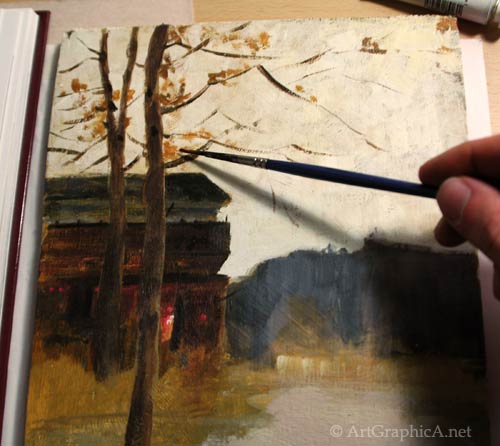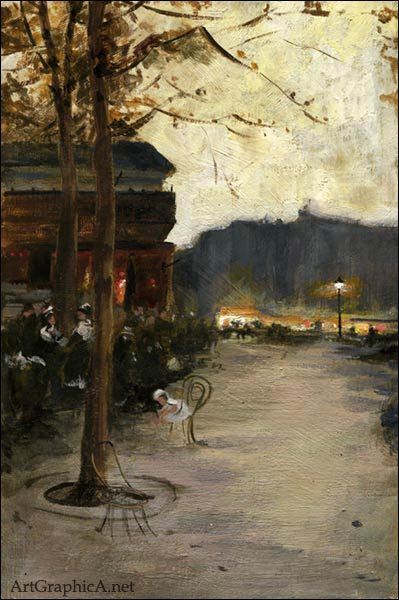Impressionist ArtGouache |
|||||||||||||||||
School of Impressionism
What is Gouache?This art lesson sits happily within the watercolor lessons section because gouache is essentially watercolor, and like watercolor, is mixed with gum arabic. Gum arabic comes from the acacia tree, and forms a non-toxic type of glue. It is broken down by water, which is why gouache can be watered down and used much like watercolor, however it may also be used in a more opaque fashion as its particles are larger than that of watercolor. Some of its first usage in art can be traced back to the 15th century. How to pronounce GouacheMost online dictionaries will tell you it rhymes with squash, and to pronounce it g-wash, but gouache is a French word and is more likely to be pronounced goo-ash. No doubt this is a source of contention that will outlive us all! Art Materials
Toning the WoodThe plywood was painted with acrylic gesso. This provides a surface on which you can use gouache, oil paints, charcoal or many other mediums. If working in oils it is better to apply several coats, sanding between applications. The sanding was skipped in this instance so that the brushstrokes might add a little to the final texture. The drawing process was done with charcoal, very rapidly as it comprised of just a few lines to mark out the building on the left and those on the right. Fixative was sprayed over this to seal it and prevent the charcoal from mixing with the gouache paint. The panel was then toned with yellow ochre that had been slightly watered down, creating a nice warm middle tone on which to paint. The sky was roughed in with a flat watercolor brush (hog's haired brushes were attempted, but pulled off as much paint as they put on), each stroke was pulled in a slightly different direction to the last, and generally after one or two strokes, more paint has to be added, so it is a good idea to mix plenty of paint before you start. The ground at this stage is placed in rather crudely for further refinement with later layers. With all the details and abstraction going into the figures and trees, it makes a lot of sense to get the big areas in place beforehand. 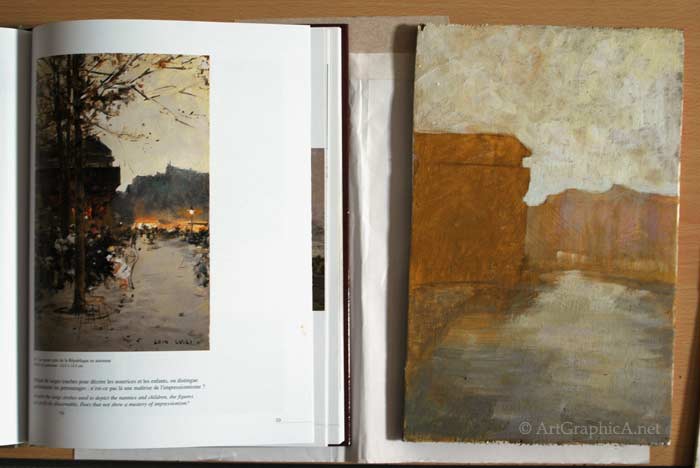 Painting the BuildingsHaving an introductory set forces you to mix your colors, and by keeping a limited palette, it's more likely you can maintain some sort of harmony beyond that of mud. There's nothing wrong in darkening your gouache colors with black and lightening with white, though this does reduce the chroma. The Winsor & Newton primary red really takes dominance, and care must be taken to only use the smallest amounts to warm your colors. Working on wood means you cannot add much water (if any) to your gouache. It also dries so quickly that there's not much time to think about edges. To soften the edges on the distant buildings on the right, a damp hogs hair bristle brush was used, scrubbing back a little of the paint. 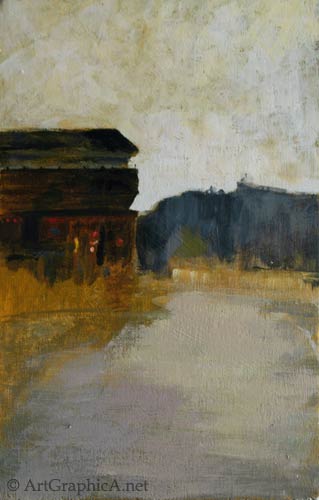 Impressionist TreesTo get some more fluidity into the gouache, some acrylic gloss gel medium was added to the paint for the tree mix. The paint was loaded thickly onto a round watercolor brush and the length of the tree added in almost one stroke. The width of the tree was built up using the same base colour (essentially yellow ochre), and then darker shades of brown were added over the top. 
The beauty of gouache is it dries incredibly quickly. If you find paint is being pulled out of the lower layers from a subsequent coat of paint, the chances are you have diluted the paint too much, your brush is not soft enough, or you are trying to paint with too many strokes.
LightsHopefully it goes without saying, never use your paints straight out of the tube, unless of course you're looking for maximum saturation of colour. Paints can never compete with nature, but if the rest of the painting is relatively neutral and low in chroma, then specks of pure paint will stand out and give an impression that they have their own source of illumination. To help increase the effect using a loaded brush and painting impasto (i.e. thickly) will strengthen the suggestion. Luigi Loir made this one of his trademarks when illuminating shop windows in broody sunset scenes. 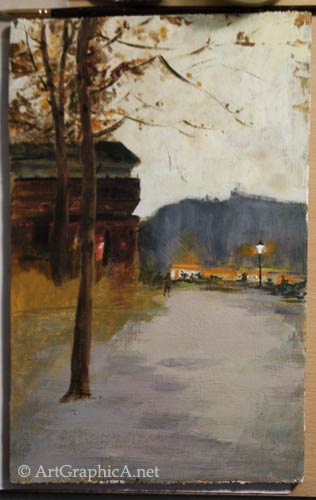 Impressionist FiguresImpressionism works on the power of suggestibility. The figures are little more than ghostly like dark blobs onto which a featureless face can be painted, reinforced by the suggestion of clothing. The highlights of the clothing were done with zinc white mixed with just a little of the earthy browns left on the palette. A city scene needs life, therefore it ideally needs people, but figures were never the real focus of Luigi's paintings. They merely help balance and maintain the harmony of the overall composition, just like the branches of the tree or the buildings. It would be strange if the figures were not there (the city would resemble a ghost town), but if they were given too much prominence, everything else in the painting would be secondary. Varnishing GouacheMost sources state that gouache cannot really be varnished, and many who have tried it have ruined a painting in the process. Leaving the painting overnight and returning to it the next day, a soft flat haired watercolor brush was used to apply a thin coat of acrylic gloss medium, which resulted in no problems with the gouache paint being lifted. The benefit of having this additional layer is that the painting need not be framed behind glass, as would usually be the case. 
Close Ups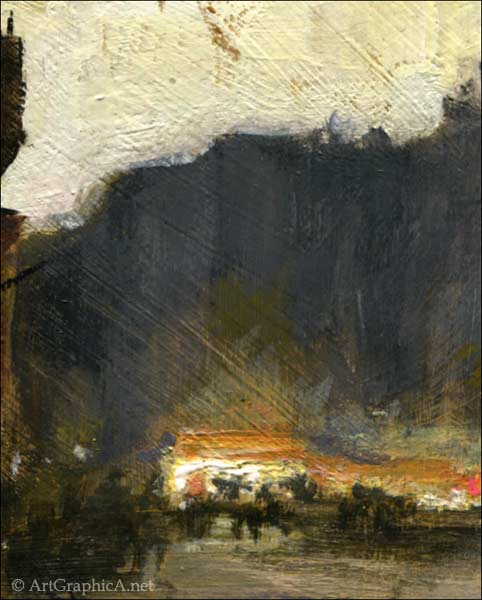 
|
|||||||||||||||||
Watercolor Lessons
|
 Many historical artists have painted in a loose fashion when sketching, and it may be easy to look at their style and attribute it to impressionism. One of the greatest influences came from Joseph Turner and his late experimentation with expressionism. His techniques influenced the Paris born artist, Claude Monet, one of the founders of the impressionist movement. The impressionist painting lesson that follows is made after Luigi Loir, who in his day was known to paint the 'Paris of Parisians' and was largely admired in is time but is not so well known today. Whilst Loir was not explicitly an impressionist painter, much of his work does encompass the same spirit and some of his looser paintings are certainly impressionistic.
Many historical artists have painted in a loose fashion when sketching, and it may be easy to look at their style and attribute it to impressionism. One of the greatest influences came from Joseph Turner and his late experimentation with expressionism. His techniques influenced the Paris born artist, Claude Monet, one of the founders of the impressionist movement. The impressionist painting lesson that follows is made after Luigi Loir, who in his day was known to paint the 'Paris of Parisians' and was largely admired in is time but is not so well known today. Whilst Loir was not explicitly an impressionist painter, much of his work does encompass the same spirit and some of his looser paintings are certainly impressionistic.
